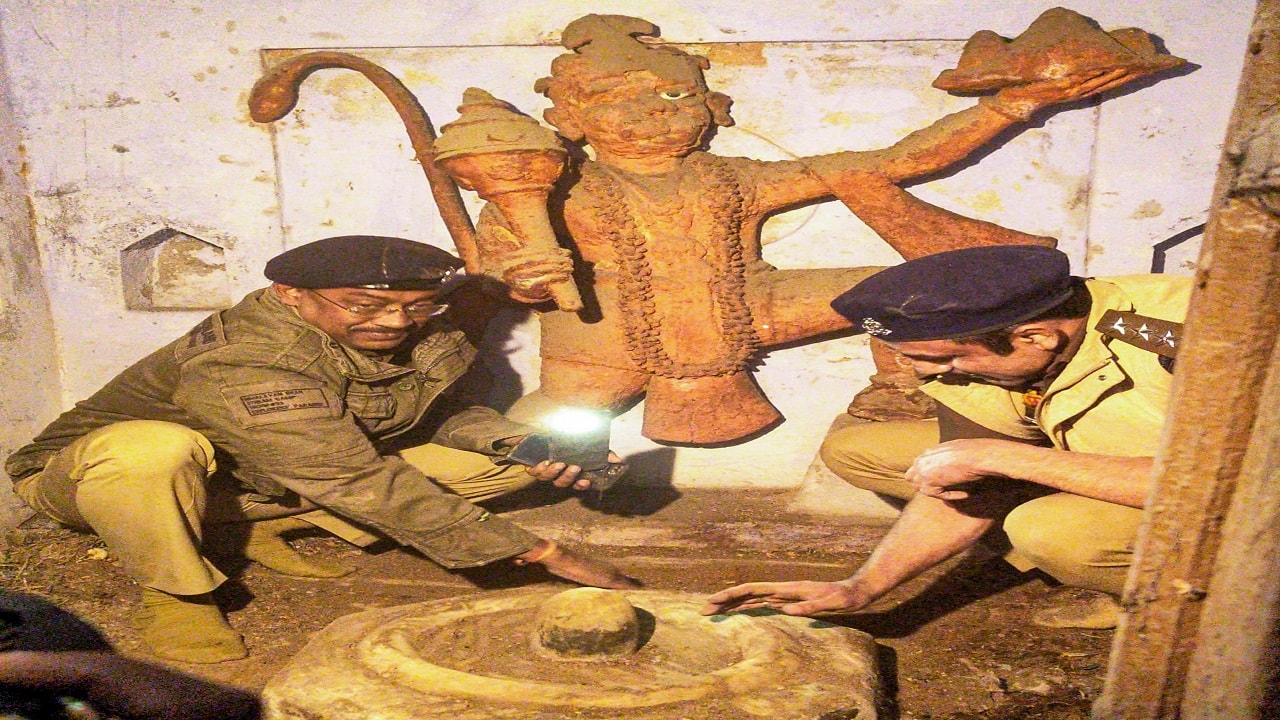 |
|
The recent discovery of an ancient temple in Sambhal, Uttar Pradesh, India, has ignited a complex situation involving religious tensions, anti-encroachment drives, and the demolition of homes by Muslim residents. The Bhasma Shankar Temple, believed to be over 500 years old, was unearthed during an anti-encroachment operation on December 13th. This discovery immediately followed a series of contentious events, including violence surrounding an earlier ASI inspection of a nearby mosque, raising significant concerns about religious harmony and the delicate balance of power in the region. The temple's rediscovery, hailed by Uttar Pradesh Chief Minister Yogi Adityanath as a symbol of India's heritage, has become a focal point of political discourse and heightened communal sensitivities.
The actions of Muslim residents in demolishing their own homes, situated on land allegedly encroached upon by the temple, are a stark demonstration of the complexities of the situation. While the motivations behind these demolitions remain multifaceted and require further investigation, it's possible that fear of legal repercussions or community pressure played a significant role. This self-demolition, however, underscores the underlying anxieties and uncertainties within the community. It raises questions about the effectiveness and fairness of the anti-encroachment drive, particularly concerning its impact on vulnerable populations. The deployment of CCTV cameras by the district administration, along with the ongoing anti-encroachment drive, reflects the government's attempt to maintain order and control the situation. However, it also potentially raises concerns regarding potential human rights violations and the equitable application of the law.
The situation in Sambhal is intertwined with broader political and social dynamics within Uttar Pradesh. The concurrent crackdown on power theft in minority-dominated areas, including the installation of a smart meter at the residence of Samajwadi Party MP Zia-Ur Rahman, adds another layer of complexity. The imposition of significant fines for power theft suggests a targeted approach, raising questions about potential discrimination and the use of resources to address specific grievances. The timing of these actions, coinciding with the temple discovery and anti-encroachment drive, suggests a potential strategy to consolidate power and exert influence within the region. The November 24th violence surrounding the ASI inspection of the Jama Masjid, resulting in casualties and injuries, further exacerbates the existing tensions and highlights the fragility of the peace in the area.
The events in Sambhal underscore the precarious balance between religious communities and the challenges of resolving historical grievances and land disputes in a politically charged environment. The involvement of the Archaeological Survey of India (ASI), tasked with carbon dating the temple and well, signifies the official acknowledgment of the historical significance of the site. However, the speed at which events have unfolded, coupled with the existing political climate, raises questions about the potential for further escalation. The Supreme Court's intervention to halt proceedings related to the mosque until the Allahabad High Court hears the masjid committee's challenge underscores the legal complexities and the need for a fair and transparent process to address the concerns of all parties involved.
The long-term implications of the situation in Sambhal extend beyond the immediate consequences of the temple discovery and anti-encroachment drive. The incident highlights the importance of addressing historical injustices and resolving land disputes in a just and equitable manner. Furthermore, the events raise serious questions about the role of religion in politics and the potential for such incidents to fuel wider social divisions. The government's approach to resolving the conflict, including its response to the self-demolitions and the ongoing power theft crackdown, will significantly impact the future relationship between different religious communities in the region. Without a measured and inclusive approach, the potential for further conflict and social unrest remains high.
Source: Muslim residents in Sambhal raze their homes near newly found temple: Report
